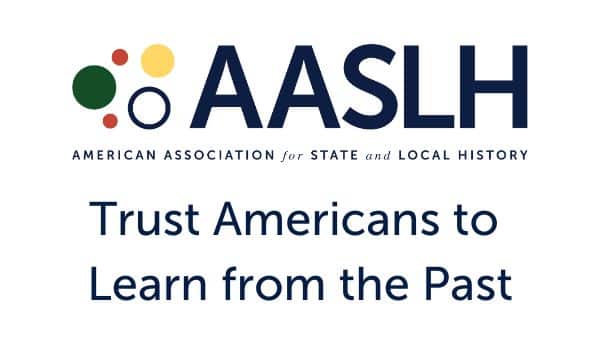
By Avi Decter and Ken Yellis
At the moment, no one can predict with any accuracy what the long-term effects of the global pandemic will be on American museums. In the short term, two consequences are pretty obvious. Some, perhaps many, museums will close or merge due to financial fragility. Those that survive will, over the next several years, likely see a substantial drop in onsite visitation, due to the requirements for social distancing so long as the plague remains active in our midst.
Many museums have fired or furloughed substantial portions of their staff in an effort to economize. Only a few―for example, the Asian Art Museum in San Francisco, where the education department is busily at work―have retained their staff intact and re-structured those staff to increase institutional capacity for outreach and engagement. It is impossible to know if one tack or the other is preferable, and it may well be, as Randi Korn and Paul Pearson have suggested, that the mandates of mission and the demands of specific circumstances will determine how most museums choose to respond.
One key element stands out, however, as worthy of special consideration in thinking about the prospects for many American museums: our audiences and their expectations.
Two audience segments in particular demand our attention. One is the category of what we might term “museum-adepts:” people who have a decided understanding of and need for what museums offer at an emotional and spiritual level. In normal times, they visit museums multiple times each year. They constitute something like 15% of all Americans. The second category of museum visitors that’s worth a close look is students coming in groups from schools, grades 3 or 4 through high school. Both groups constitute a significant portion of annual attendance at most American museums, whether they be local historic house museums or the Smithsonian Institution.
For museum-adepts, a return to normality is highly desirable. This population, which skews toward highly educated, well-to-do professionals, executives, and business owners, has benefited from being able to live in relative comfort, perhaps working and communicating remotely or, in some cases, relocating to safe refuge in low-impact areas. Yet for these people, no matter how many virtual tours they take online, no matter how many visual resources they access, no matter how many lectures and classes they access via Zoom, the urge to resume actual visits and directly and immediately experience works of art, history, and science in museum settings in the presence of others will remain compelling. For museum-adepts, the museum journey is an integral part of their personal ethos of experiencing the world and discovering themselves.
The challenges of social distancing are, however, likely to constrain the numbers of people that museums are able to accommodate. Museums will probably have to increase the number of staff to assure visitors’ health and safety under unusual conditions.
Two implications follow: first, museums will want to organize their space in new and different ways―developing temporary or remote facilities to conserve tight visitor space for direct access to collections―and to create the next generation of programming and outreach that engages museum audiences without increasing pressure on limited gallery space. Both initiatives, incidentally, will require a staffing up rather than downsizing.
Student visits will almost certainly continue to decline for some time to come. School districts and independent schools have been struggling for years to support field trips for their students. The pandemic has ravaged education budgets and disrupted the educational development of tens, if not hundreds, of thousands of young people. Restoring educational continuity is likely to preoccupy schools and to lead to a decline in museum visits.
Moreover, providing additional digital resources to teachers is unlikely to offer a satisfactory alternative to the traditional field trip. Piling yet another digital resource or curriculum on teachers is not likely to win much favor with them or provide much help to them. Instead, American museums will likely to need to beef up their education staffs to reach out to students and teachers in their classrooms―and to the community at large in community centers, senior centers, libraries, etc.―bringing with them exemplary objects, images, texts, and voices from their collections.
It may be that we are too pessimistic about how prolonged the virus crisis will be. For our two groups, our sense is that over time the museum-adepts and students are likely to prove loyal and resilient in their respective ways. For both, too, the re-entry of museums into their lives should prove most welcome, for different but related reasons. For American museums to retain and grow their audiences for the long term they will need to re-introduce and even re-brand themselves to lure museum-adepts and young learners back into the fold. This process should begin to take place during the transition period, however prolonged that turns out to be. The task will be how to evoke the feelings of discovery, surprise, excitement, awe, and transcendence that create an effective and rewarding museum journey.
Avi Decter has worked in public history for over forty years, and is the author of Interpreting American Jewish History at Museums and Historic Sites. His many projects include the Boott Cotton Mill at Lowell National Historical Park; the U.S. Holocaust Memorial Museum; Louisville Slugger Museum and Visitor Center; and the National Civil War Museum in Harrisburg, Pennsylvania.
Ken Yellis, principal of Project Development Services, is a historian with four decades in the museum field. Yellis has worked extensively with the Museum Education Roundtable and has been involved in over a hundred history, science, and art exhibitions.
How is your institution coping with COVID-19? Share your ideas and experiments with the field on our blog. Email [email protected] to submit a blog post.



